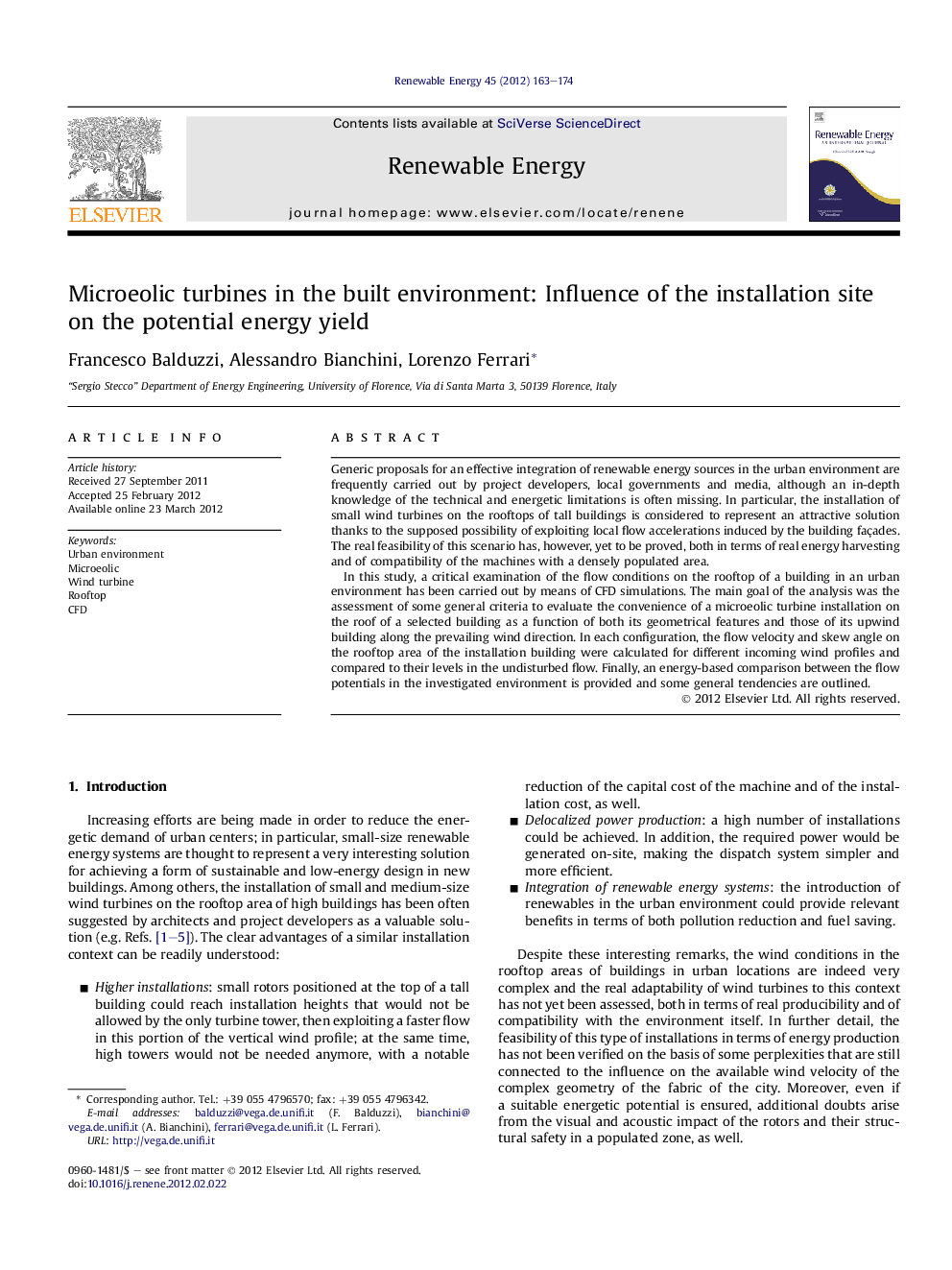| Article ID | Journal | Published Year | Pages | File Type |
|---|---|---|---|---|
| 300956 | Renewable Energy | 2012 | 12 Pages |
Generic proposals for an effective integration of renewable energy sources in the urban environment are frequently carried out by project developers, local governments and media, although an in-depth knowledge of the technical and energetic limitations is often missing. In particular, the installation of small wind turbines on the rooftops of tall buildings is considered to represent an attractive solution thanks to the supposed possibility of exploiting local flow accelerations induced by the building façades. The real feasibility of this scenario has, however, yet to be proved, both in terms of real energy harvesting and of compatibility of the machines with a densely populated area.In this study, a critical examination of the flow conditions on the rooftop of a building in an urban environment has been carried out by means of CFD simulations. The main goal of the analysis was the assessment of some general criteria to evaluate the convenience of a microeolic turbine installation on the roof of a selected building as a function of both its geometrical features and those of its upwind building along the prevailing wind direction. In each configuration, the flow velocity and skew angle on the rooftop area of the installation building were calculated for different incoming wind profiles and compared to their levels in the undisturbed flow. Finally, an energy-based comparison between the flow potentials in the investigated environment is provided and some general tendencies are outlined.
Graphical AbstractFigure optionsDownload full-size imageDownload as PowerPoint slideHighlights► Analysis of the potential energy yield of a small wind turbine installation in the urban environment. ► CFD calculation of the flow velocity and skew angle on the rooftop of several installation buildings. ► Wind characteristics on the rooftop related to the building features and of its surroundings. ► Comparative study of the potential energy yield in dependence on the installation building. ► In a proper VAWT installation, the capacity factor can increase up to 45%.
